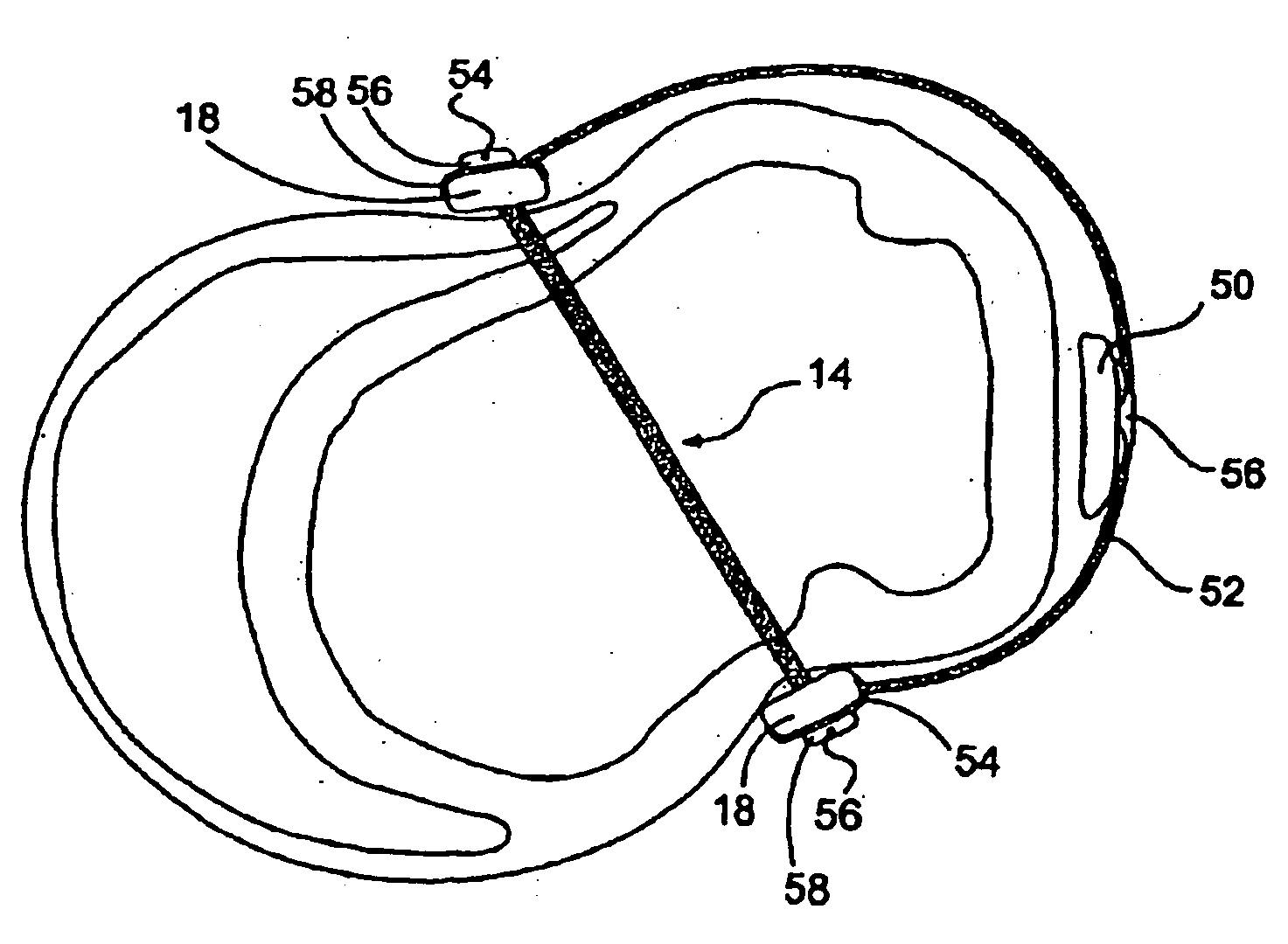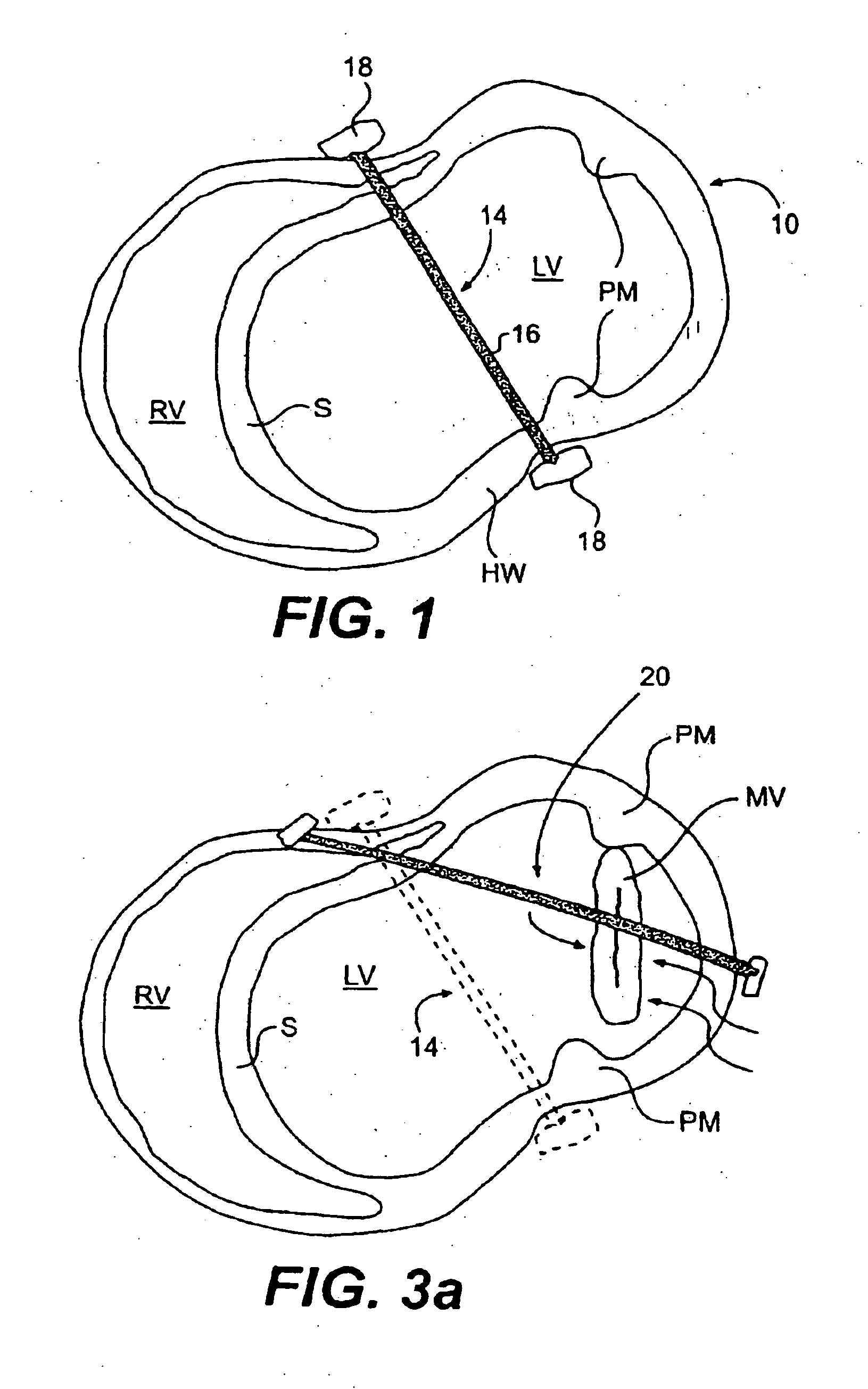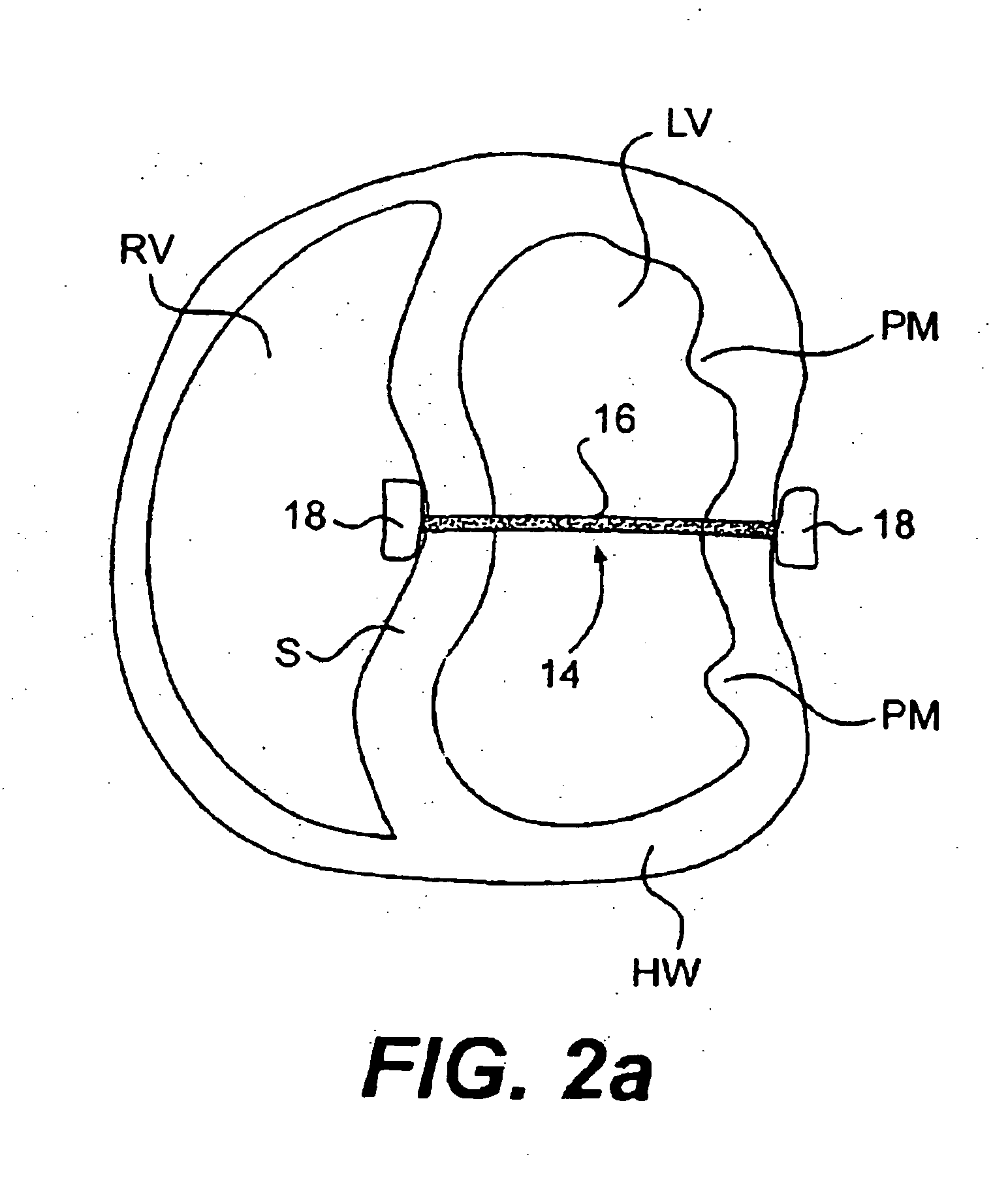Methods and devices for improving mitral valve function
a technology of mitral valve and function, applied in the field of methods for improving the function of heart valve, can solve the problems of valve leakage, worsening valve dysfunction, and affecting the function of valves, and achieve the effect of less risk for patients and minimal invasiveness
- Summary
- Abstract
- Description
- Claims
- Application Information
AI Technical Summary
Benefits of technology
Problems solved by technology
Method used
Image
Examples
Embodiment Construction
[0081] The various aspects of the invention to be discussed herein generally pertain to devices and methods for treating heart conditions, including, for example, dilatation, valve incompetencies, including mitral valve leakage, and other similar heart failure conditions. Each device of the present invention preferably operates passively in that, once placed in the heart, it does not require an active stimulus, either mechanical, electrical, or otherwise, to function. Implanting one or more of the devices of the present invention operates to assist in the apposition of heart valve leaflets to improve valve function. In addition, these devices may either be placed in conjunction with other devices that, or may themselves function to, alter the shape or geometry of the heart, locally and / or globally, and thereby further increase the heart's efficiency. That is, the heart experiences an increased pumping efficiency through an alteration in its shape or geometry and concomitant reductio...
PUM
 Login to View More
Login to View More Abstract
Description
Claims
Application Information
 Login to View More
Login to View More - R&D
- Intellectual Property
- Life Sciences
- Materials
- Tech Scout
- Unparalleled Data Quality
- Higher Quality Content
- 60% Fewer Hallucinations
Browse by: Latest US Patents, China's latest patents, Technical Efficacy Thesaurus, Application Domain, Technology Topic, Popular Technical Reports.
© 2025 PatSnap. All rights reserved.Legal|Privacy policy|Modern Slavery Act Transparency Statement|Sitemap|About US| Contact US: help@patsnap.com



